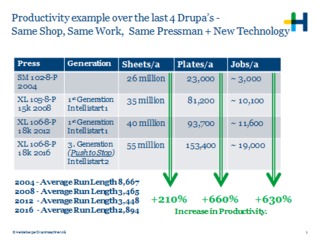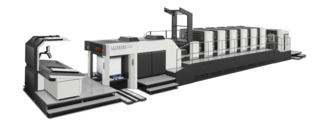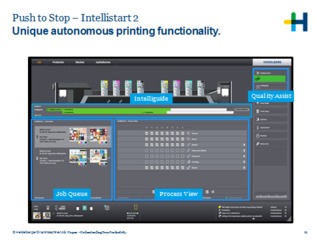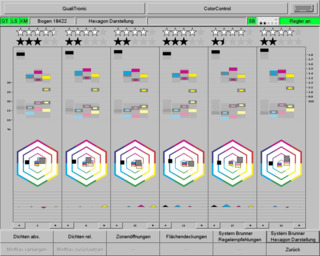Offset: A Migration, Not an Addition
With everyone talking about digital technologies, where does that leave offset?
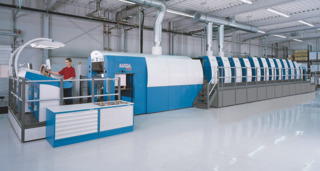
More than one pundit has declared “print is dead,” or more specifically “offset print is dead.” But the reality is that despite all the talk about digital technologies in recent years, offset is still just as vibrant—and profitable—segment as ever before.
“Our general commercial print customers state that offset still represents more than 75% of their sales volume, and yet they are often producing their work on 10-15 old presses,” noted Chris Manley, president of Graphco, part of the Graphic Systems North America distribution group for RMGT.
Kian Hemmen, western regional RMGT sales manager, Print & Finishing Solutions, also part of the Graphic Systems North America group, further explained, “Over the past decade we have seen digital press sales increase and drive revenue in that direction. Today we are seeing more and more commercial printers try to bridge the gap between digital and offset. When we get into discussions with clients and partners, the need of short run is always increasing, but the definition of short run is often 500 to 2000 sheets.”
“Offset printing is a key application when it comes to managing the required volume of printed products. More importantly it’s tied to the vast majority of a print shops revenue which usually is between 70% & 85% of their total revenue,” agreed Clarence Penge, VP sheetfed, product management, Heidelberg. “With that said, offset is adapting with automation to handle extremely short run lengths in a profitable manor.”
One key thing to keep in mind, said Susan Baines, director of marketing, Komori America Corporation, is that digital isn’t replacing offset in most cases—it is just becoming a second option that can work in harmony with the first. “We don’t see it as so much of a migration as an addition. With the majority of printed pages still produced offset, it’s far from a dead technology. We see printing companies working to diversify their equipment to keep up with market needs. Inkjet is a natural next step for many commercial printers, and a complement, not a replacement, to offset.”
Growing and adapting
But still being relevant doesn’t mean offset hasn’t—or won’t continue to—adapt and change to suit the current market needs.
“Offset presses continue to become more efficient through software enhancements and productivity improvements and tools that improve the job cycle time,” said Baines. “We see many commercial printers replacing multiple older presses with one new more efficient model.”
“Offset printing in only one part of the manufacturing process,” agreed Penge. “I like to say our customers don’t get paid until the product is delivered, meaning there are other steps in the process that are equally as critical. Offset ties into a smart manufacturing process.”
“Offset is unlikely to be usurped for the highest print quality, highest output level, and lowest cost production method for many years to come so further automation…is the answer,” stressed Manley. “Having the lowest cost to print with the highest quality of finished product helps us continue our strength in the market.”
The bottom line? “Technology, Technology, Technology,” said Hemmen. “Building sophisticated machines to improve the human operation. The advances on the offset presses with automation is key to this successful transition of short run offset.”
Hemmen went on to note that he is more optimistic than ever before about the state of the offset market and where it is headed next. “The advances the energy-curable solutions, primarily LED UV, is increasing print quality, decreasing turn times, which in the past was driven to digital, and increasing in packaging applications. We are seeing more unique designs, the use of Pantone colors, florescent, pastels, and specialty effects that cannot be produced digitally coming back to the market. The range of substrates that people are able to design around and make lasting impressions for their clientele is much wider with offset. The capabilities of the new offset presses today are exciting for print and packaging sales people to have the confidence that they can gain the customers and encourage them to design the way that they want to, to make there printed piece stand out.”
“KBA is confident about the future of the offset industry,” agreed Walter Chmura, KBA VP of technical sales. “Offset technology is the most efficient and cost-effective printing solution now and in the future for run lengths of all sizes. The more copies customers need, the more cost-effective offset technology is. On the other hand, clients have a large variety of substrates types with different custom finishes inline a sheetfed press. So it seems like this solution is not even close to be replaced. New technologies also offer great advantages in their particular markets, but they will have to find a way to coexist with offset, instead of looking for a way to replace it.”
“We know the offset press market in shrinking but still represents a core segment of the print industry,” noted Baines. “That’s why Komori has worked for the past few decades to expand its product offerings. We have added inkjet and digital products, through co-development and strategic partnerships to ensure that as a company we continue to grow, and continue to meet the needs of our customers. Komori knows print—it’s our core product—and with our new products and services believe our future is bright.”
“Heidelberg is very positive about offset in the future, as it offers the lowest manufacturing cost per 1000 sheets,” stressed Penge. “We are also a believer in the future of digital/inkjet, but recognize there are crossover points and different solutions based on application, price, content etc. In fact, we are building our Primefire Inkjet press on the Speedmaster XL 106 (offset platform) as we see in the offset press technology all part of a digital solution.”
“Print is in a renaissance as marketers realize that electronic marketing can only move the needle on certain products and messages,” noted Manley. “Variable has largely become addressing, so digital is a very expensive way to print and address. The RMGT lowest cost to print solution provides our customers with an unfair advantage in their market, as there is no print solution of any kind that can match our quality and cost.”
“KBA is dominant in sheetfed automation by allowing the customer to pick features that drastically reduce make ready times and provides disruptive technology to the pressroom,” said Chmura. “KBA works closely with the customer to determine which automation features will have the largest financial impact to their bottom line. The company supports the customer with a return on investment to each of the key make ready feature to create the most productive profitable press in their manufacturing facility. KBA customizes the Rapida press to meet the individual needs of the printer. The shorter the run length the more automation is needed to drastically reduce setup times. Highly automated Rapida presses compete effectively against the digital presses today.”
So what should commercial printers be watching when it comes to their shops and making the most out of all of their equipment—be it offset or digital? “Print service providers today are demanding faster, just-in-time production, and more demanding color jobs,” said Chmura. “Automation is able to provide the printer what they need to become very profitable; this along with highly automated custom presses and innovative technology allows…customers to remain competitive in all segments.”
Hemmen agreed, noting, “The offset presses of today have so much technology built into them, but this is built with the operator and the commercial print owner in mind. The key to success today is increasing margin, and having a press that can reliably produce the products that are being thrown at it. Today’s printing presses need to be sophisticated yet simple to operate, and include all of the tools to decrease waste and increase productivity. Some of these features include easy to use LED UV curing, new and improved operation stand, closed loop system improvements with artificial intelligence, on board camera systems for inspection and color control, and many more other great features, designed with the operator in mind.”

